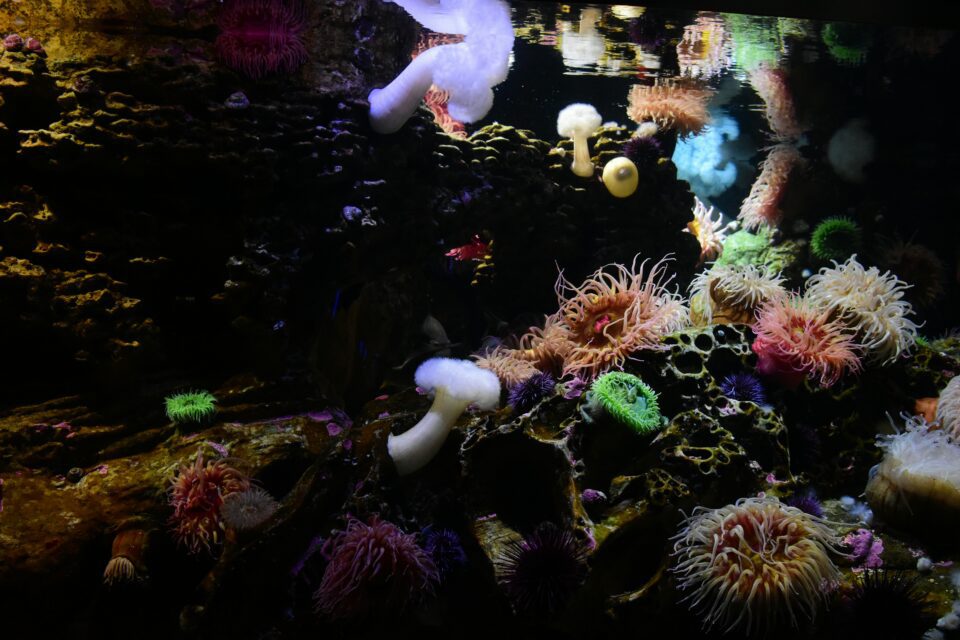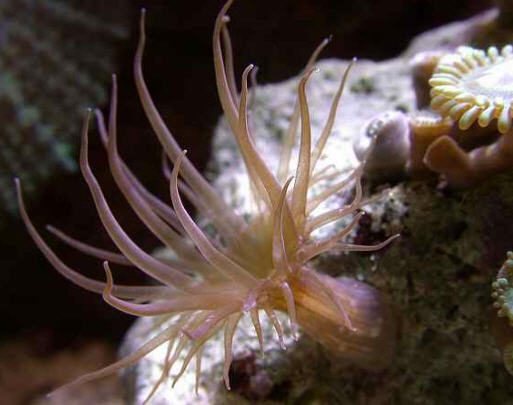UV has been around for awhile, what does it do? Why should you have it? Which one should you get? Lets talk about all this and more
What is UV?
UV refers to ultraviolet sterilization. UV sterilizers are devices that use ultraviolet light to kill harmful microorganisms and parasites that can be present in the aquarium water. The water is passed through a chamber where it is exposed to the UV light at a wavelength of 253.7-nanometer, which damages the DNA of the microorganisms and prevents them from reproducing. This damages the DNA of parasites and algae.
How does UV work?
UV works very simply. A sealed tube with plumbing allows you to pump aquarium water past it. That water is exposed to a specific wavelength of the UV spectrum that kills or damages parasites, bacteria and algae. You tune the flow for “dwell time” for different organisms to target them specifically.
Downsides?
There are few downsides. The biggest ones are cost and bulb replacement. High quality UV sterilizers are not cheap unfortunately. Depending on your tank size they can become quite expensive. Also bulbs burn out, on average every six months. While it’s not a tremendous cost, it still is an ongoing expense.
Another downside that doesn’t get mentioned much, is setup. While it seems simple enough (one hose goes in, one goes out), there are some details such as orientation, cleaning, and flow that can reduce the effectiveness of your UV drastically.
Finally, heat. One problem with UV’s is that they put out a great deal of heat. Adding one, especially a large one, may also mean you have to add a chiller to compensate for the extra heat load for your tank. This may impact the cost of the UV even more than it’s already high price.
Why you need UV.
UV is a breakthrough in saltwater tanks, especially reef tanks. Parasites, bacteria and algae are a part of the reef ecosystem and are present in every aquarium from one degree to another. When your fish, or coral get sick, you have very few options. If you have no coral or inverts, it is an easy fix… copper or some other antibiotic will usually clear things up, but if you have a reef tank your options are extremely limited.
Having a properly sized and tuned UV doesn’t rid you of these unwanted creatures, but it depletes and damages them to such an extent that they become non-issues. Meaning you may still get ich, but the load on the fish is much, much lower than normal so they can fight it off easy. This applies to all issues in the tank that are caused by living organisms.
It is so important, that we recommend every customer with a tank have a UV light setup… it matters that much.
How to pick the right UV for your tank.
Picking the right UV is pretty simple. All manufacturers give tank size as the suggestion. You want a big enough UV that you can handle all your issues, but not so big that it actually kills the planktonic life in the tank. We recommend one size up from what the manufacturers recommend, if your budget allows it.
The reasons are many. First, your bulb gets dirty over time. You can clean it, but you know how quickly your glass gets dirty. A higher output can compensate for this film and still have enough power to kill everything.
Next is turnover, the bigger the UV the more flow it can handle in regards to ideal parasite killing ranges. Meaning the more times the tank water is turned over. This leads to even less of a chance that you allow parasites or bacteria to flourish in the tank.
The main downsides to this strategy is the extra heat thrown off by the UV and flow. Flow needs to be at the manufacturers guidelines, if it goes too slow it will kill the hardier planktonic life, copepods and other animals we want to survive. So sometimes with bigger UV’s you might need a dedicated pump to keep the flow you need.
Flow
I feel like we need a section just to talk about flow. UV works by damaging the DNA of bacteria, viruses, algae and parasites. The spectrum of 253.7-nanometer is used in hospitals to sterilize rooms and surgery tools. Water treatment plants use it to kill protozoa and bacteria in our drinking water.
Each unwanted animal needs a different amount of time to kill it completely, or at least damage it so much that it becomes a non issue. Algae needs the least time, bacteria, viruses, protozoa and parasites the most, in that order.
For a reef tank, you always want to tune it for the parasites, which means the most dwell time. BUT, and this is a big but, you only want just enough time to kill it, no more.
Think of bad critters as characters in a video game, and your UV as your gun. Each pass through the UV “shoots” 300 hit points of damage. Algae might need 50 to kill it, and parasites 300 damage. So if your flow is perfect, you will kill everything going through your tank. But if your flow is too fast, the dwell time decreases and maybe the UV is only doing 150 points of damage, meaning it doesn’t kill everything, and takes multiple passes to kill the parasites. On the opposite end, higher organisms like copepods might need 1000 damage to kill them, and if you slow your flow too much you can kill them as well plus reduce the amount of water you cleanse.
So flow, and tuning flow is extremely important. Get it right.
Setup
As someone once said, it’s all in the details. That also goes for UV setup. They are simple, but a few things need to be accounted for and done to maximize your investment.
First is flow. Look at what the manufacture recommends and aim for that. The way we do this is to get something we know the volume of (for example a 1 gallon milk jug), and time how long it takes to fill it. Some math gets you to your gph (gallons per hour). You can turn up, or down the flow to get to where it needs to be. With bigger setups you may need a dedicated pump. This step is so important, make sure you nail it.
Next is orientation. Air bubbles will cause light to not penetrate well, heat spots on the bulbs and early failure. You want your UV skimmer set up horizontally with the input at the bottom, and the outflow at the top. That stops bubbling, dry spots and maximizes your water contact.
Lastly Temperature. Really watch your tank when you setup your UV, depending on the size it can put out a lot of heat. You can go from needing 2 heaters in a 300 gallon system, to needing none and a chiller. It really depends on the size and flow your setup for.
Final Thoughts
A reef tank isn’t cheap. Some people have a hard time justifying the cost of a UV and the accompanying things needed for that setup. It’s so helpful and reduces so many issues that we really wish that aquariums included them, but of course they don’t. Do yourself a favor, save, buy used, do whatever… but setup a UV light in your aquarium and save yourself the heartache and headache of pests.




